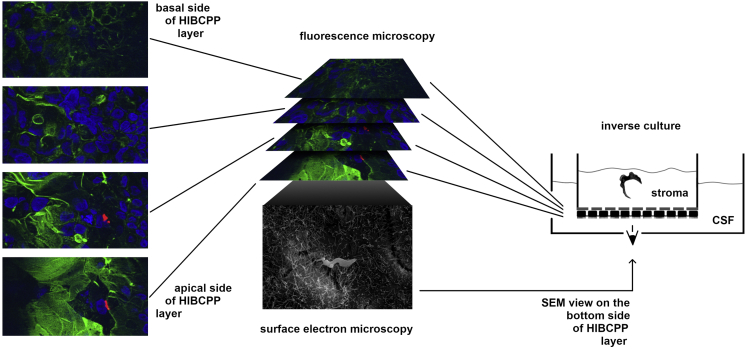Transmigration of Trypanosoma brucei across an in vitro blood-cerebrospinal fluid barrier

Trypanosoma brucei is the causative agent of human African trypanosomiasis. The parasite transmigrates from blood vessels across the choroid plexus epithelium to enter the central nervous system, a process that leads to the manifestation of second stage sleeping sickness. Using an in vitro model of the blood-cerebrospinal fluid barrier, we investigated the mechanism of the transmigration process.
For this, a monolayer of human choroid plexus papilloma cells was cultivated on a permeable membrane that mimics the basal lamina underlying the choroid plexus epithelial cells. Plexus cells polarize and interconnect forming tight junctions. Deploying different T. brucei brucei strains, we observed that geometry and motility are important for tissue invasion. Using fluorescent microscopy, the parasite's moving was visualized between plexus epithelial cells. The presented model provides a simple tool to screen trypanosome libraries for their ability to infect cerebrospinal fluid or to test the impact of chemical substances on transmigration.
Access the article from the following link: https://doi.org/10.1016/j.isci.2022.104014
- 69 views
